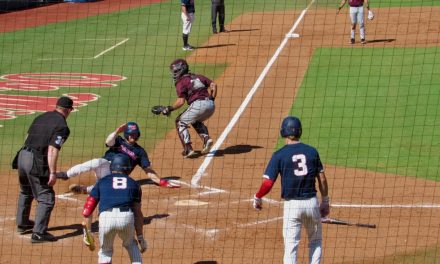
Lane Kiffin, Ole Miss look for 10th win of season as Rebels prepare to compete in storied Gator Bowl

Thank you to BlueSky and Southern Traditions Horse Farm for sponsoring all our Gator Bowl coverage. We appreciate you and all you do!
JACKSONVILLE — The 2025 Gator Bowl will host its 80th game on January 2nd when Ole Miss and Duke square off in Jacksonville, Florida. We thought you might enjoy a little historical look at the game as well as a perspective on what a win would mean for head coach Lane Kiffin’s Rebel program.
By the numbers
All but three of the Gator Bowl’s invitees during its eight decades of existence have been current Power 4 programs. The only outliers were Air Force in 1963 (a good call after what happened that November), Tulsa in the 1952 season, and 19th-ranked Washington & Lee in 1950. This is the sixth time in the past nine seasons the Gator bowl has fielded an ACC-SEC matchup.
The Gator Bowl has drawn over 80,000 fans seven times with the all-time attendance record set on January 1, 2009. In that game, an unranked Florida State team beat No. 18 West Virginia by a score of 33-21 in front of 84,129 fans.
Ole Miss has played in three Gator Bowls, the first of which was an All-SEC ranked matchup against Florida under Johnny Vaught in 1958.
Then Archie Manning, completing his senior year in 1970, played his final game as a Reb in the Gator Bowl to conclude his second Heisman-finalist season. All-SEC quarterback and Ole Miss career total offense record-holder Jaxson Dart has elected to do the same.
The Rebels’ most recent appearance in Jacksonville capped the 1990 season under Coach Billy Brewer. The SEC is 11-5 vs. the ACC in the Gator Bowl since the last time the Rebels played here. And who knows, in future years the Gator Bowl may once again bring in two SEC teams, say, like an Alabama and an Ole Miss.
The Gator Bowl is the sixth-oldest bowl in the country. Its only predecessors are the Rose, Sugar, Orange, Cotton and Sun Bowls. For its first nine years, the Gator Bowl joined these other five bowls as the country’s six New Year’s Day bowl games. Over the years, the Peach (1968) and Fiesta Bowls (1971) have moved into the New Year’s Six collection and now host college football’s playoff games.
A personal note on bowl-game history
In my formative years, New Year’s Day normally marked the conclusion of an 11-game bowl season. I personally played quarterback in the Sun Bowl on January 2nd of 1977, which ironically was actually a Sunday. It was the NFL’s off-Sunday before Super Bowl XI (where Snake beat Fran) and the four New Year’s Day games were played the day before.
There wasn’t a single football game other than ours scheduled the day we played the Florida Gators in an old-school Wishbone matchup. We had the attention of every football fan across the country. Of note, our kicker Tony Franklin boomed a 62-yard field goal which still stands as the longest in bowl history.
And since there were no NFL games played that day, the CBS network televised ours. On the “Tony the Tiger Sun Bowl” website, it refers to its 1977 sportscasters Pat Summerall and Tom Brookshier as “the most illustrious Sun Bowl broadcast team ever.”
It was our fourth televised win of the season against no losses, and all were played away from Kyle Field. It was difficult to be awarded a game on TV back then because there were so few networks. Bowl games were also extremely hard to come by.
On a personal note, I’ve always wondered if the ‘77 Sun Bowl was the last college football game that Elvis Presley watched. He was an avid football fan and didn’t go on his final tour until February of that year.
Show them what you’ve got, Rebels
This upcoming Gator Bowl will also be the only football game played on the planet on January 2nd. And unlike our Florida game, the Rebels will be playing Duke in prime time, which will mean an even larger football-hungry television audience.
And while it won’t conclude the bowl season, it will be the last of the traditional “big name” bowl games played. Additionally, Ole Miss will be the last ranked team seeing bowl game action. As such, it will be great exposure for a team intent on showing the entire country what it’s missing in the Invitational. It will be without question a showcase event.
Jaxson Dart’s selection as first team All-SEC quarterback is the first for Ole Miss since Eli Manning in 2003. It’s a fraternity that also includes Ole Miss legends Archie Manning, Jake Gibbs, Eagle Day, and Charlie Conerly.
This team, led by the winningest Ole Miss quarterback in the modern era, is looking to complete back-to-back 10-win seasons for the only time in program history other than 1959 and 1960. The coach of THOSE teams, of course, had the stadium named after him.
As we watch the dominoes continue to fall, there’s also the strong possibility that Ole Miss can play its way back into the final AP Top 10. This is another gauge for the success of your season and the program’s trending pattern. Ole Miss hasn’t had back-to-back years in the final AP Top 10 since 1963.
The last impression is the enduring impression.
Coincidentally, we were attempting to have consecutive 10-win seasons for the first time in A&M’s history in that Sun Bowl and we achieved that goal. It was a tremendous accomplishment and also quite the rarity. It’s been three decades and three conferences since A&M last achieved back-to-back 10-win seasons.
And should you be a tad old fogey-ish like me, you’ll appreciate the fact that the baby boomer generation and the Gator Bowl share the same date of commencement — January 1, 1946. In this regard, we legitimately could call the Gator Bowl the Granddaddy of the Boomers.
All for one and one for all
This will be my 70th bowl season (gulp—I just had birthday No. 69), and it’s probably the 60th that I’ve enjoyed as a fan or a player. I’m truly overjoyed that the Rebels’ football players, almost to a man, have chosen to play out the entire season. What an example it sets.
This kind of devotion is what makes this Ole Miss team and this program so exceptional, and is the ingredient that will continue to attract future stars to Oxford.
While it was totally normal for each and every potential NFL draft pick to play in their bowl games back in my day, the pendulum has certainly swung. That is not the case today.
But the concepts of teamwork and loyalty are so well represented at Ole Miss. This last group of players who Monte Kiffin had a personal hand in bringing into the ’Sip has been outstanding.
We’re seeing virtually every healthy All-SEC and All-American Rebel suiting up for this very last dance. This is what “all for one and one for all” genuinely looks like.
Keep it Simple, Man. Get your Ten.
David Walker was named Louisiana’s High School Player of the Year at just 16 years old and, at 17, became college football’s first quarterback to earn Freshman of the Year honors. He remains the NCAA’s youngest-ever starting quarterback, a distinction that has stood for decades.
Transitioning from a wide-open high school offense to Emory Bellard’s renowned wishbone triple option, Walker excelled as a dual-threat quarterback. He graduated as Texas A&M’s all-time winningest quarterback and served as a two-time team captain, helping to transform a program that had endured 15 losing seasons in the previous 16 years.
After his playing career, Walker coached and taught algebra at six Texas high schools before moving into private business. In 2011, he published his memoir, “I’ll Tell You When You’re Good,” a title inspired by the coaching philosophy of Shannon Suarez, the Sulphur High and Louisiana High School Hall of Fame coach who was a significant influence on Walker’s life and career.
Walker’s compelling storytelling in his autobiography reflects the breadth of his experiences in high school and college football, and it is an undeniable fact that he saw more action than any athlete in the history of the NCAA. Since 2013, he has contributed to The Rebel Walk, sharing his insights and expertise with readers.























